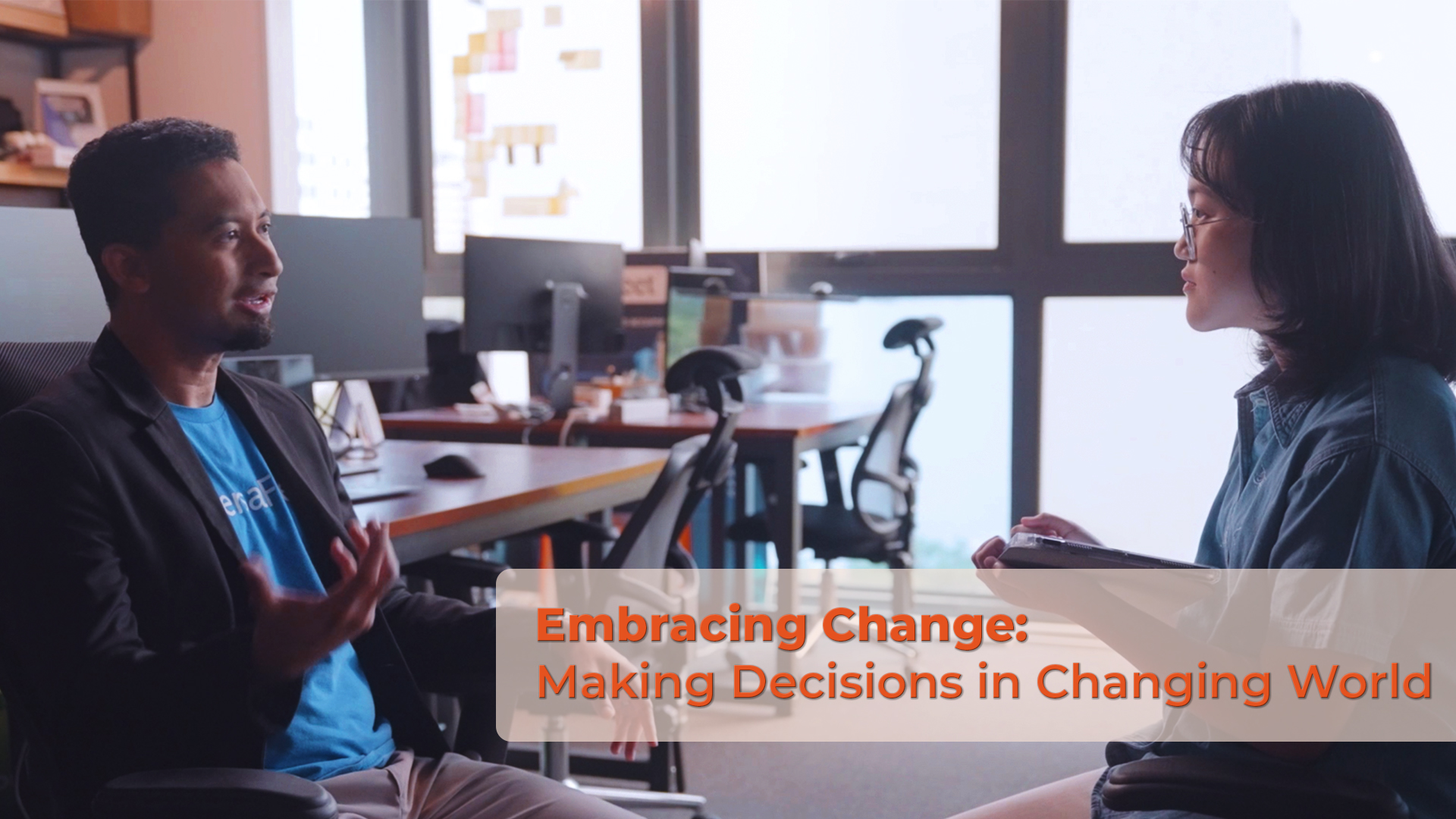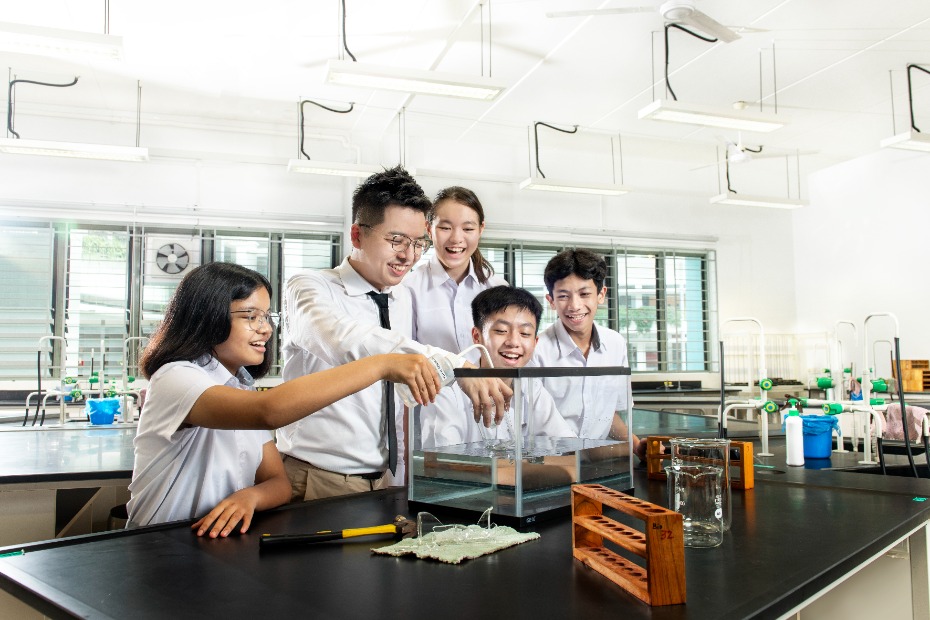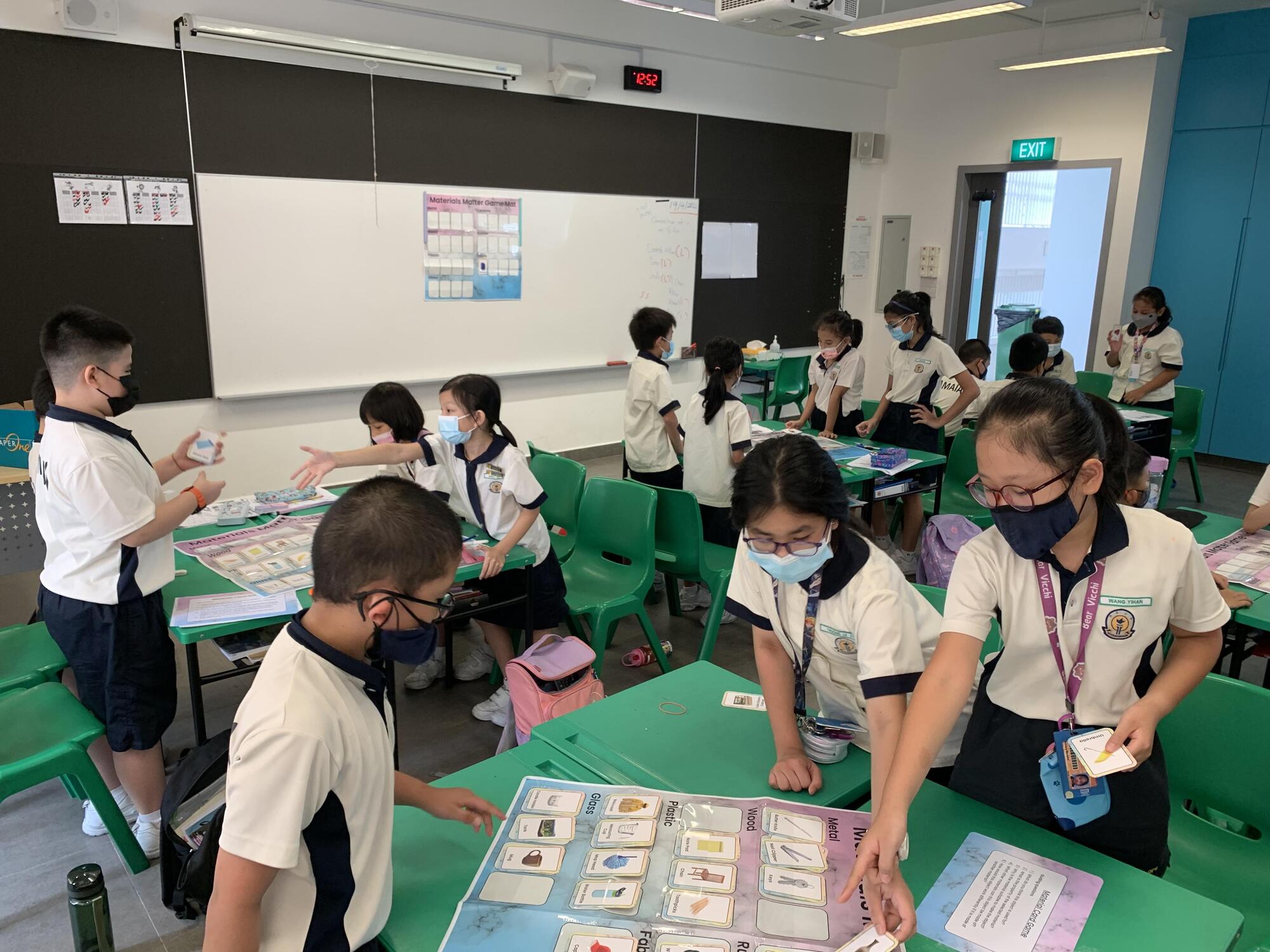C.O.O.L Lessons for Meaningful Learning
23 Aug 2011

Pupils holding on to frogs during a farm visit, an outing that offered an out-of-classroom, authentic learning experience.
It was time for Science lessons and Ms Gil Tan wasted no time explaining to her Primary 3 class their task for the day: to make a hanging mobile showing the life cycle of a frog. Working in groups of threes or fours, the pupils quickly hopped into action, colouring and cutting a series of pictures provided by their teacher, before stringing the images together to depict a frog’s life in the right order, from eggs to tadpoles to froglets to frogs.
The speed and confidence shown as the pupils assembled their mobiles made it clear that what they had seen and experienced a week earlier during a visit to a frog farm was still fresh in their minds. For Ms Tan, the exercise provided her class with a lesson they would long remember, and would demonstrate the effectiveness of Elias Park Primary School’s C.O.O.L approach to learning.
A curriculum that engages the senses
Short for Constructionist Object-Oriented Learning, C.O.O.L. uses authentic, out-of-classroom experiences and tangible objects to make learning more active, engaging and impactful. Now integrated into English, Maths and Science classes, C.O.O.L. came into being in 2008, when a team of Pri 3 teachers decide to redesign the curriculum in a way that would improve how pupils relate and respond to what they see, touch and learn, both in and out of the classroom.
After considering a variety of pedagogical methods, the team zoomed in on Constructionism, a theory of learning developed by Seymour Papert, a South Africa-born mathematician, computer scientist and educator. According to this theory, learning is most effective when individuals are given the chance to construct and share with others tangible objects based on what they have learnt.

‘Constructing’ objects and sharing them with others is a crucial step to effective learning according to the C.O.O.L. method.
Mr Jeremy Ang, HOD for Character and Citizenship Education and a member of the school’s curriculum innnovation team, added that the teachers also wanted to tap the potential of learning spaces beyond the confines of the classroom. Combined with explorations in the real world, the school’s resulting take on Constructionism engages learners through all their senses and stimulates different aspects of intelligence. Introduced to Pri 3 classes in 2009, C.O.O.L. was extended into the Pri 4 curriculum last year, when it also bagged a Bronze Innergy Award from MOE for its positive impact on learning.
The arithmetric of C.O.O.L. is simple: out-of-classroom learning plus hands-on experiences equal authentic and meaningful learning. Using this approach, the teachers breathed new life into their classes, weaving an active, tactile component into their lessons and offering regular reference points that help their pupils connect the dots between what they learn and what they see in their daily life.
Inspired by integrated learning
C.O.O.L also gave the school the ability to integrate English, Maths and Science components into a single session. During the frog farm visit, for instance, the pupils had to pen a diary entry on the excursion for their English homework as well as take field notes for their Science class. After completing the life cycle task, each group also had to present their mobile to their classmates, explain the sequence they used and defend their choice if anyone raised an objection. For Maths, they might be called upon to create a frog origami and measure how far their paper frog could hop.

This team creatively varied the length of their mobile strings such that the start of the life cycle is on the shortest while the end is the longest.
Pointing out other forms of learning that take place during C.O.O.L. activities, Ms Tan said, “Teamwork was required as the pupils worked in groups. They also had to think how to put together the mobile so that the pictures don’t come off easily. The pupils also worked on their presentation skills through sharing about their mobiles with other teams.”
One particular team shone out in this instance, having strung up a mobile with strings of differing lengths, with the start of the life cycle indicated by the shortest string and the final stage marked by the longest. In other groups, there were individuals who displayed a bent for leadership, assigning tasks to their fellow team members and coordinating the ensemble.

Samantha Fan (right) says the hands-on experience of making the mobile has helped her remember the life cycle of a frog better.
From the pupils’ perspective, such C.O.O.L. lessons are both effective and enjoyable. “I enjoyed the visit to the frog farm very much as we got to touch the frogs and feed them!” declared Samantha Fan. “Making the mobile helps me remember the frog’s life cycle better.” Her classmate Elysia Teng agreed. “It’s fun doing the frog mobile! It helps me to reflect on the visit to the frog farm,” she stated.
Mr Lokman Hakim, a teacher who was a member of the curriculum innovation team, noted that C.O.O.L. has made a visible difference in his pupils’ learning. “They are more engaged during lessons and they feel a greater sense of achievement as they are able to see the results of their learning taking shape, be it a plasticine model of a fish or a real-life encounter with a manta ray at Underwater World,” he explained. “These activities provide real depth to their learning, which is something that textbooks alone cannot offer.”



.jpg)

